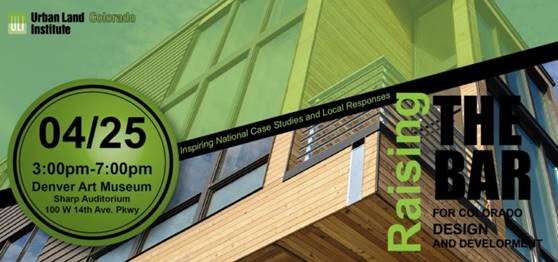FROM THE LinkedIn GROUP – REAL ESTATE AND MOBILITY
Value Capture Replaces Congestion Pricing as Governor Cuomo’s Subway Funding Fix
“”Draft legislation acquired by POLITICO, which two sources say is being peddled by the Cuomo administration, would demarcate huge swaths of Manhattan and the Bronx as ‘transportation improvement districts,’ and allow the state-run Metropolitan Transportation Authority to take property tax revenue from those districts that it claims is generated by transit improvements as far as a mile away,” reports Dana Rubinstein for POLITICO New York on March 23.”
https://www.planetizen.com/news/2018/03/97908-value-capture-replaces-congestion-pricing-governor-cuomos-subway-funding-fix
California’s Love of Cars Is Fueling Its Housing Crisis
Manville estimates that between 1999 and 2008 developers created at least 6,900 new housing units in the exempted area, or more than three-quarters of those added in downtown L.A. And while the building conversions required other exemptions as well, the developers he interviewed said that “without removing the parking requirements, the conversions would have been impossible.”
https://www.bloomberg.com/view/articles/2018-03-06/california-parking-regulations-are-a-big-part-of-its-housing-crisis
A massive “aerotropolis” is planned for a patch of the plains near DIA that could end up bigger than the Denver Tech Center
“The turning point occurred late last month, when Aurora, Adams County and the Aerotropolis Area Coordinating Metropolitan District finalized a deal that forms a regional transportation authority, an entity critical to raising the money necessary to pay for the project’s roads and infrastructure.”
https://www.denverpost.com/2018/03/11/denver-aurora-highlands-project/
Fast Track to Skyrocketing Real Estate Prices: The New Public-Transit Effect
In selected cities across the United States, single-family homes near public transit stops can cost 2% to 32% more—while condos can fetch 2% to 18% more, according to a 2008 report from the now-defunct Center for Transit Oriented Development. The report looked at San Francisco, San Diego, Sacramento, and Silicon Valley’s Santa Clara County in California; and Chicago; St. Louis; and Portland, OR. Meanwhile, rent premiums for apartments can range from nothing to 45%. The report looked at apartment rentals in San Francisco, San Diego, and Santa Clara County, CA.”
https://www.realtor.com/news/trends/public-transit-effect-real-estate/
The Ticking Time Bomb for Suburban Retail
“Different development patterns are more susceptible to vacancies and flipping than others, the model shows—especially when layering on the eventual arrival of autonomous vehicles. Self-driving technology stands to drastically reduce parking needs, cheapen delivery costs, and easily convey shoppers to locations they actually find desirable, such as walkable downtown areas where shopping feels like more of an “experience.” Those are the kinds of commercial areas that will likely weather this coming retail storm, according to the model. Worst off are car-oriented suburban strip malls and big-box stores, with huge swaths of these properties devoted to parking.”
https://www.citylab.com/transportation/2018/03/a-ticking-time-bomb-for-suburban-retail/554882/
MOBILITY
RTD Telephone Town Hall Event
District A, Director Kate Williams
Wednesday, April 4, from 7:30 to 8:30 p.m.
About 30,000 residents in each of the 15 RTD districts will be called at random through an automated system and invited to take part in the public telephone forum. Interested participants are encouraged to pre-register to receive a call when the event starts by visiting the RTD website or by calling on the date and time of the event to 877-229-8493 and entering the code 112070.
http://www3.rtd-denver.com/elbert/news/index.cfm?id=10525
Denver City Council Member Kendra Black wants to challenge the car-centric attitude of SE Denver. The District 4 team is ditching their cars on Fridays, opting for alternative transportation, like biking, walking and transit. Are you up for the challenge? Ditch your car on Fridays and share your #NoDriveFriday commute on our social media pages.
Twitter: @KendraBlackD4
Facebook: @DenverCityCouncilwomanKendraBlack
First self-driving train launches on London Thameslink route
“Gerry McFadden, the engineering director of Govia Thameslink Railway, said: “Self-drive technology has great potential for the rest of the country’s rail network, particularly on congested routes, and could in future reduce the need for costly infrastructure projects.””
https://www.theguardian.com/business/2018/mar/26/first-self-driving-train-london-thameslink-rail
You Want Congestion Pricing? Be Specific.
There are currently only five congestion pricing schemes in the world that approximate what New York was trying to do, so it’s more important to consider the nuts-and-bolts of each program, rather than glossing over them and assuming congestion pricing is a well-defined and agreed-upon policy that one orders online and installs on a lazy Sunday afternoon.
https://www.citylab.com/transportation/2018/03/you-want-congestion-pricing-be-specific/556094/?mc_cid=7fcc688491&mc_eid=74d31a3e73
I Have Seen the Future of Urbanism and It’s a Scooter
The new scooters look like a souped-up electric version of the folding Razor kick-scooters that were a wild fad in the early aughts, and remain tremendously popular with the first-grader cohort. This grown-up version boasts solid rubber tires, a kickstand, and—perhaps most importantly for adults—an electric-assist throttle on the handlebars, which allows riders to zip alongside their pedal-driven brethren at speeds of 10 to 15 mph. A smartphone app handles location, unlocking, and payment.
https://www.citylab.com/transportation/2018/03/scoot-scoot/555746/
Dozens of U.S. Cities Have ‘Transit Deserts’ Where People Get Stranded
“Transit deserts are areas where demand for transportation exceeds supply. They represent underserved areas of a city, not a citywide transportation shortage.” Denver has the lowest ratio among the cities surveyed at 1.5% of people living in transit deserts.
https://www.smithsonianmag.com/innovation/dozens-us-cities-have-transit-deserts-where-people-get-stranded-180968463/#M7J6hdKkoYj1rrXV.99
ATTAINABLE HOUSING
How Recent Tax Law Changes May Affect State LIHTCs
As previously discussed in this space, Novogradac estimates that the tax bill enacted in December would have reduced the future supply of affordable rental housing by about 235,000 rental homes nationwide over the next 10 years. Thanks to the recently enacted temporary 12.5 percent increase in 9 percent allocated low-income housing tax credits (LIHTCs), more than 10 percent of that loss should now be avoided.
https://www.novoco.com/notes-from-novogradac/how-recent-tax-law-changes-may-affect-state-lihtcs
The Appeal of Affordable Housing to For-Profit Investors
“There are an increasing number of for-profit buyers,” says Jeff Arrowsmith, senior director of affordable housing with real estate services firm CBRE. Apartment properties that have formal restrictions on how high their rents can rise because they are in affordable housing programs now account for roughly 20 to 25 percent of the apartment properties with more than 20 units that are bought and sold, according to CBRE data.
Lower-rent properties are attractive in part because demand for these apartments is very strong.
http://www.nreionline.com/multifamily/appeal-affordable-housing-profit-investors
AffordableHousingSix steps help to navigate this tricky terrain.
While it is a significant market opportunity, new investors must learn to navigate a complicated process. Commercial real estate professionals can invest wisely by following these steps.
https://www.ccim.com/cire-magazine/articles/2018/03/affordable-housing/
A map of America’s homeless problem reveals the best and worst states for affordable housing
As of 2017, eight of the ten states with the highest rates of homelessness (which includes Washington, DC) are among the ten most expensive places to live.
http://www.businessinsider.com/affordable-housing-crisis-homelessness-us-2018-3
Denver City Council Member Jolon Clark reports that Denver’s new five-year housing policy, strategy and investment plan, Housing an Inclusive Denver, was adopted by Denver City Council. Housing an Inclusive Denver outlines the strategies that will guide Denver’s affordable housing investments to create and preserve strong neighborhoods and diverse housing options that are accessible and affordable to all Denver residents.
http://www.luckydistrict7.org/news/denvers-plan-for-more-affordable-inclusive-housing-moves-forward
REAL ESTATE
Denver City Council Member Paul Kashmann reports that the University of Denver (DU) recently launched its Campus Master Plan process—a planning effort that will create a blueprint to guide the evolution of the physical and built environment on and around the campus. This is a unique planning effort in that it will not only examine the campus, but also its edges. The goal is to promote greater interactions with neighboring communities, commercial areas and parks, as well as to improve transportation, pedestrian, and bicycling systems for the entire area. You may have come to one of the kick-off open forums hosted at DU last month, which were attended by community members, students, faculty and staff. Throughout the planning process, DU will continue to work with the community to gather your ideas and vision for the future of the area. After last month’s forums, DU released a survey to gather feedback on priorities for the kinds of spaces and places the community would like on and around campus, as well as ideas to support mobility and sustainability.
http://impact.du.edu/our-progress/campus-master-plan/
Denver City Council Member Mary Beth Susman invites you to attend the next (and final) Open House for the City Park Master Plan Update with Design Guidelines. The meeting is Thursday, April 19th. Stop by anytime between 5 – 7 pm at East High School Cafeteria located at 1600 City Park Esplanade. Join Denver Parks & Recreation and Historic Denver at this public open house to review and provide feedback on draft master plan recommendations and priorities.
http://www.denvergov.org/content/denvergov/en/denver-parks-and-recreation/planning/park-facility-projects/city-park-master-plan.html
The High Line Canal Conservancy has launched the second phase of significant planning for the High Line Canal. This multi-jurisdictional planning initiative follows the Community Vision Plan completed in early 2017. This planning phase will focus on a Framework Plan – a multi-year implementation plan to ensure that the Canal reaches its greatest potential as an environmental, recreational, social, historic, and economic asset. It will include complete plans for signage and wayfinding, as well as landscape guidelines for all 71 miles.
http://www.denvergov.org/content/denvergov/en/denver-council-district-5/news-events/newsletters/high-line-canal-open-house.html














